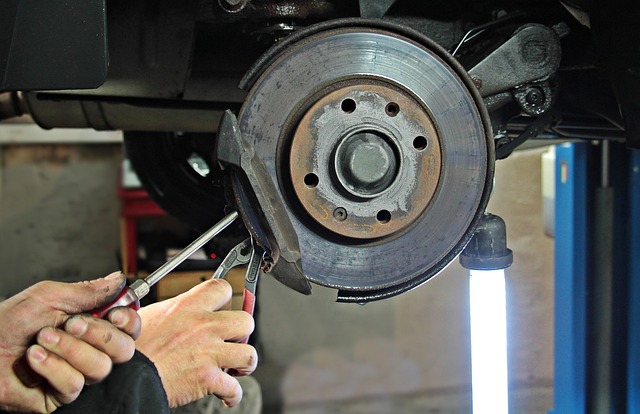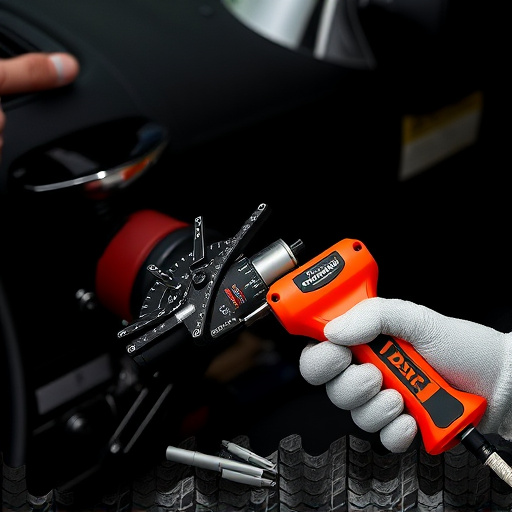Tesla's seatbelt pretensioners, crucial for passenger safety during collisions, require meticulous resetting after triggers, especially for insurance claims. This process involves locating and discharging the module within the side impact airbag system using specialized tools. Proper documentation, including detailed records with vehicle identifiers, reasons for reset, and diagnostics, is vital to ensure insurance approval and adherence to manufacturer guidelines for optimal passenger safety during collision repair.
In today’s digital era, understanding Tesla’s advanced safety features like seatbelt pretensioners is crucial for efficient insurance claim documentation. This article guides you through the process of resetting a Tesla seatbelt pretensioner specifically for insurance claims. We’ll explore the functionality of these pretensioners and provide step-by-step instructions on how to perform the reset accurately. Additionally, we’ll delve into documenting and presenting the reset to enhance your claim’s approval chances.
- Understanding Tesla Seatbelt Pretensioners and Their Functionality
- The Process of Resetting a Seatbelt Pretensioner for Insurance Claims
- Documenting and Presenting the Reset for Insurance Claim Approval
Understanding Tesla Seatbelt Pretensioners and Their Functionality

Tesla seatbelt pretensioners are advanced safety features designed to secure occupants during a collision. They automatically tighten the seatbelts with great force, minimizing the risk of severe injuries. This mechanism is crucial for maintaining passenger safety, especially in high-speed accidents. The pretensioner works seamlessly with Tesla’s airbag system, providing a multi-layered defense against impact.
Understanding how these systems operate is essential when dealing with insurance claims and car restoration processes. If a seatbelt pretensioner triggers during an incident, it may require resetting to ensure proper functionality for future use. While some minor adjustments can be made by owners, severe damage or complex issues often necessitate professional car body repair services to restore the pretensioner’s efficiency, much like fixing a car scratch repair to maintain its safety and aesthetic value.
The Process of Resetting a Seatbelt Pretensioner for Insurance Claims

Resetting a Tesla seatbelt pretensioner for insurance claims involves a precise process that ensures both safety and accurate documentation. First, locate the pretensioner module, typically found in the vehicle’s side impact airbag system. This component is responsible for tightening the seatbelt during a collision to secure occupants safely. To reset it, you’ll need to discharge the electrical charge stored within. This can be done using specialized tools that safely discharge the capacitor, rendering the pretensioner ready for reuse.
During this process, it’s crucial to follow manufacturer guidelines precisely to avoid any potential safety risks. Once discharged, inspect the module for any damage or wear. If found damaged, replacement might be necessary, involving body shop services to ensure proper integration into the vehicle bodywork. Proper documentation of the entire process is essential for insurance claim accuracy, demonstrating that the seatbelt pretensioner has been reset and is now ready for future use in ensuring passenger safety during vehicle collision repair.
Documenting and Presenting the Reset for Insurance Claim Approval

When it comes to insurance claim documentation for a Tesla seatbelt pretensioner reset, clear and thorough records are essential. After performing the reset, document the process meticulously, including the date, time, and specific steps taken. Note any unique identifiers or codes displayed on your vehicle’s system to ensure accurate tracking of the service. This detailed record serves as tangible proof for insurance companies, demonstrating that the reset was conducted properly and according to manufacturer guidelines.
Presenting this documentation effectively is crucial for gaining insurance approval. Organize the records in a structured format, highlighting key details such as the reason for the reset, the model year and type of Tesla vehicle involved, and any relevant diagnostics performed. Some auto repair shops may also include photographs or videos showcasing the process, providing an additional layer of transparency that can expedite the claim approval process. Remember to consider the overall presentation and clarity of your documents when dealing with insurance companies, as this can significantly impact the smooth progression of your Tesla seatbelt pretensioner reset insurance claim.
In conclusion, resetting a Tesla seatbelt pretensioner for insurance claims is a straightforward process that can streamline the claim documentation. By understanding the functionality of these safety features and following the outlined steps, owners can effectively prepare their vehicles for potential insurance adjustments. This method ensures that your Tesla remains in top condition while facilitating a smooth claims process, ultimately saving time and effort.














